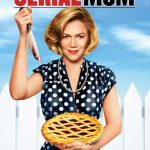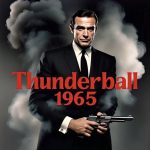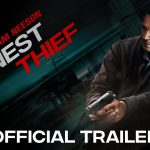Honeydew (2020)
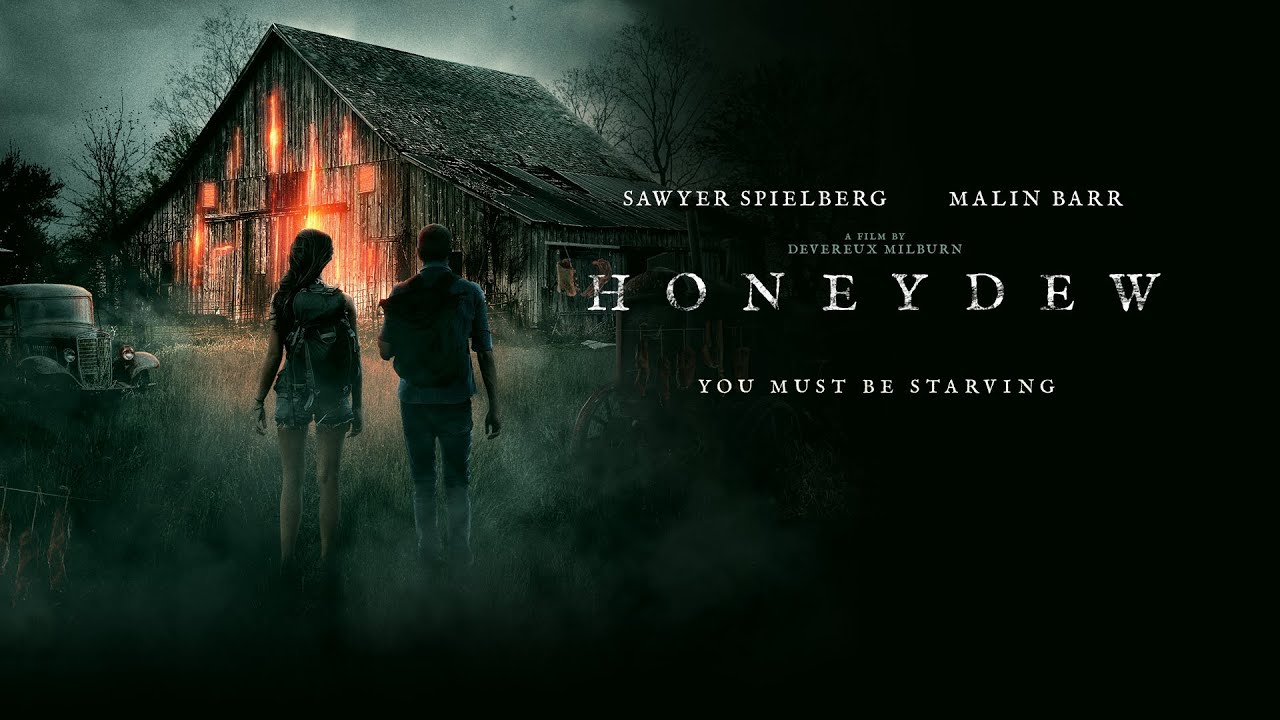
Honeydew (2020) – Overview and Analysis
Honeydew is a 2020 psychological horror film written and directed by Devereux Milburn. Known for its unsettling tone and surreal atmosphere, the film blends elements of folk horror and body horror to tell a deeply disturbing tale of isolation, obsession, and survival. Featuring standout performances and a unique visual style, Honeydew has become a talking point for fans of slow-burn, experimental horror.
1. Plot Summary
The story centers on Sam (Sawyer Spielberg, in his feature-film debut) and Rylie (Malin Barr), a young couple traveling through rural America. After their car breaks down, they seek shelter with an elderly woman named Karen (Barbara Kingsley) and her mute, unsettling son, Gunni (Jamie Bradley).
As the night unfolds, the couple discovers that Karen’s hospitality hides something far more sinister. The film delves into themes of food, obsession, and control, escalating into grotesque and surreal horror as Sam and Rylie’s situation spirals out of control.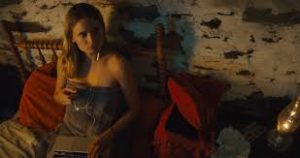
2. Themes
2.1 Isolation and Desperation
- The remote, rural setting creates a sense of isolation that mirrors the characters’ vulnerability. The lack of escape options heightens the tension as the protagonists become trapped in Karen’s world.
2.2 Food and Consumption
- Food is a central motif, both literally and symbolically. Karen’s meals, which appear to be home-cooked and wholesome, take on a sinister quality as their true nature is revealed. The film critiques society’s obsession with food, health trends, and consumption.
2.3 Psychological Decay
- As the story progresses, the characters’ mental states deteriorate. The oppressive atmosphere and eerie behavior of their hosts lead to a descent into madness and body horror.
3. Characters
- Sam (Sawyer Spielberg): A struggling actor with a passive personality. His character arc explores vulnerability and dependence as he becomes increasingly ensnared in Karen’s web.
- Rylie (Malin Barr): An ambitious and assertive graduate student studying botany. Her determination contrasts with Sam’s passivity, creating tension between the couple as they face their ordeal.
- Karen (Barbara Kingsley): The film’s antagonist, Karen is a seemingly kind but deeply unsettling figure. Her calm demeanor masks her manipulative and sinister intentions.
- Gunni (Jamie Bradley): Karen’s son, a mute and eerie presence who adds to the film’s unsettling atmosphere.
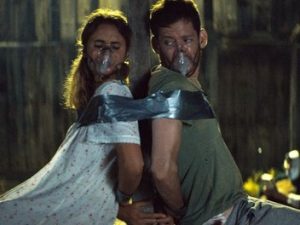
4. Visual and Cinematic Style
- Surreal Atmosphere: Honeydew employs off-kilter framing, jarring edits, and unconventional sound design to create a sense of unease.
- Muted Color Palette: The film’s visual aesthetic uses muted tones and dim lighting, enhancing the feeling of claustrophobia and decay.
- Sound Design: The soundtrack blends naturalistic sounds with distorted audio cues, heightening the surreal and unnerving experience.
5. Reception
5.1 Critical Response
- Honeydew received praise for its originality and unsettling tone, though its slow pacing and ambiguous narrative divided audiences.
- Critics lauded Barbara Kingsley’s performance as Karen, calling it chilling and memorable.
- Sawyer Spielberg, making his acting debut, earned positive reviews for his portrayal of Sam, showcasing vulnerability and terror.
5.2 Audience Reaction
- Horror fans appreciated the film’s willingness to embrace discomfort and ambiguity, while others found its pacing and surreal elements polarizing.
- Comparisons to The Texas Chain Saw Massacre and Midsommar highlighted its folk horror influences and emphasis on psychological dread.
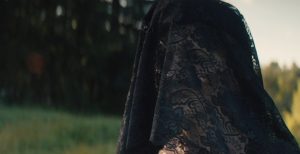
6. Themes in the Ending (Spoilers)
The climax of Honeydew reveals the horrifying extent of Karen’s obsession with food, health, and control. As Sam and Rylie succumb to her manipulation, the film leaves viewers with a sense of unresolved dread. The ambiguous ending underscores the futility of the couple’s resistance and the perverse normalcy of Karen’s world.
7. Why It Stands Out
- Experimental Approach: Honeydew stands out for its willingness to deviate from traditional horror tropes, embracing a more art-house approach to storytelling.
- Atmospheric Horror: The film focuses on creating an oppressive, unnerving atmosphere rather than relying on jump scares or overt violence.
- Social Commentary: Its critique of food culture, obsession with health, and the consequences of isolation add depth to its horror elements.

